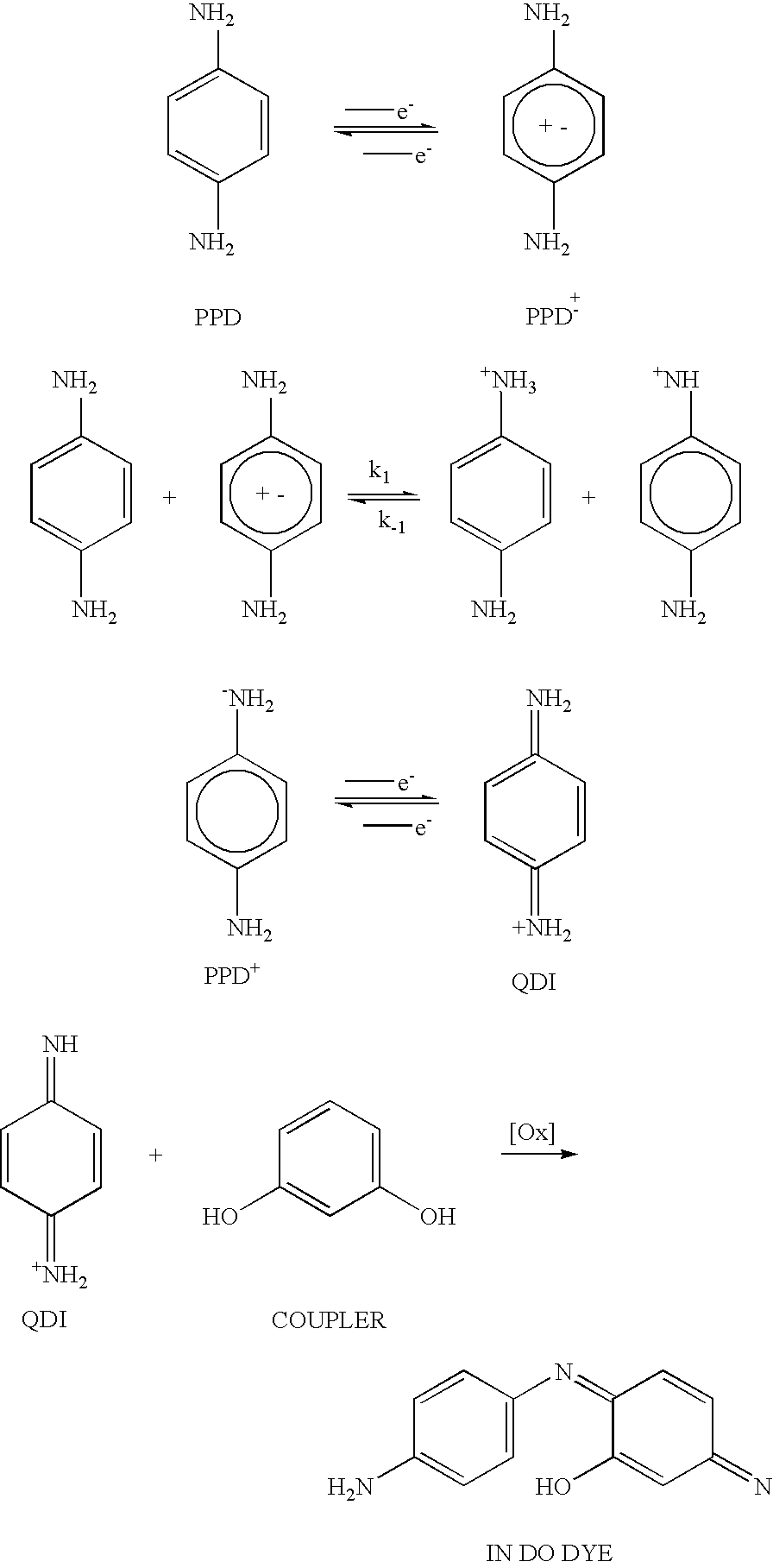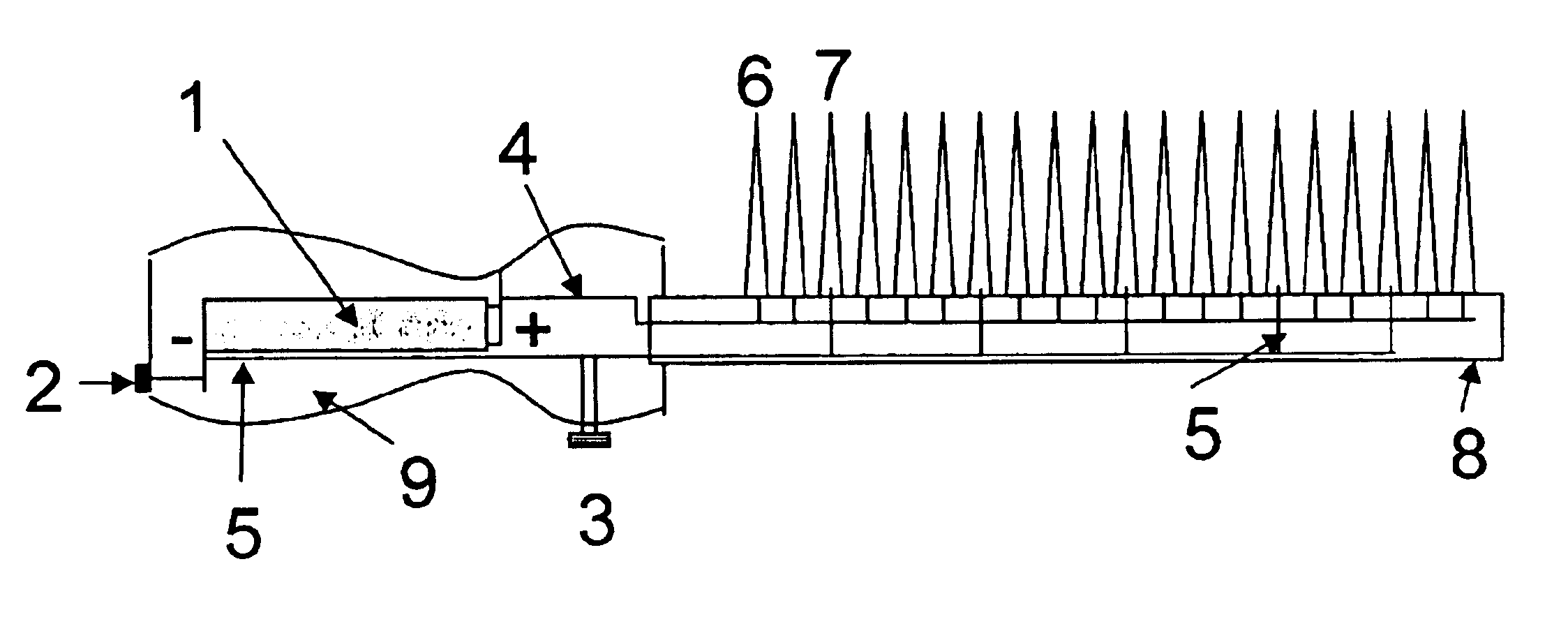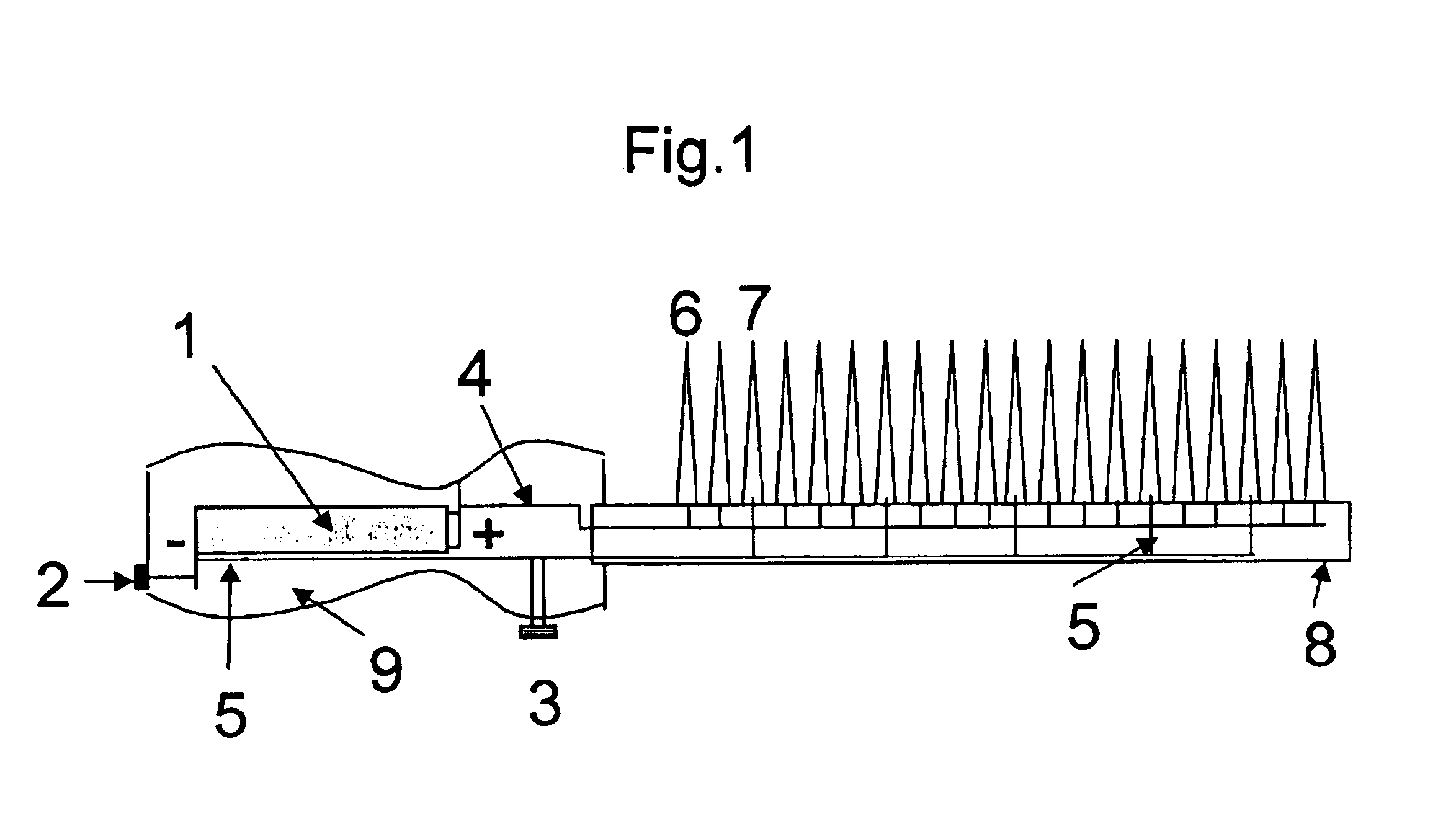Electrochemical method and system for dyeing hair
a technology of electrochemical and dyeing hair, which is applied in the direction of packaging foodstuffs, hair cosmetics, packaged goods, etc., can solve the problems of hair damage, inconvenience of hair coloring compositions and kits for use at home, and indiscriminate oxidation
- Summary
- Abstract
- Description
- Claims
- Application Information
AI Technical Summary
Benefits of technology
Problems solved by technology
Method used
Image
Examples
example 1
Electrochemical Coloring of Hair Using 1,4-phenylene diamine (PPD) and 2-methyl-4-aminophenol (PAOC) at pH 7
This example illustrates the coloring of hair with oxidative dyes without the use of peroxide and alkaline solutions like ammonia by using an electrode system to initiate and drive the coupling reaction.
Two tresses (0.5 gm) of Piedmont hair were placed in 5 ml of an aqueous mixture whose composition is shown in Table 1A. In this case the primary intermediate is PPD and the coupler is PAOC. The pH of the mixture was 7.0.
A voltage of 3 V was applied to the precursor mixture on the hair by contacting it with two wires connected to a dry cell battery. After 30 minutes the electrodes were removed and the hair swatch was rinsed with water and allowed to dry.
The above procedure was repeated with a mixture having exactly the same composition and also for the same time but in this case the electrical leads were not connected to the battery (i.e., 0V).
The changes in color resulting from...
example 2
Electrochemical Coloring of Hair Using Several Oxidative Dyes at pH 10
This example illustrates the invention using another primary intermediate and coupler. The example also demonstrates that a coupler alone is not sufficient for electrochemically coloring hair in the absence of a primary intermediate.
In Example 2A-2I tresses (0.5 gm) of Piedmont hair were separately placed in 5 ml of the aqueous mixtures whose composition are shown in Table 2. The pH of all the mixtures was 10.0. A voltage indicated in the Table 2 was applied to the precursor mixture on the hair by contacting it with two wires connected to a dry cell battery. After 30 minutes the electrodes were removed and the hair tress was rinsed with water and allowed to dry. The changes in color are given in Table 2.
It is seen from Table 2 that 1,4-phenylene diamine / 2-methyl-4-aminophenol and the 1,4-phenylenediamine / Resorcinol and N,N-bis-dihydroxyethyl / 1-naphthol, p-phenylene diamine primary intermediate-coupler pairs are ac...
example 3
Comparison of Direct Electrochemical Oxidation to the Possible Indirect Oxidation Through the Generation of Molecular Oxygen
As discussed above, the direct oxidation of the primary intermediates useful in the instant invention, is favored over the oxidation of water to molecular oxygen. This example demonstrates that even if this were not the case, any molecular oxygen that might be generated would lead to only slight oxidation if at all.
A solution of comprising 0.1 wt % 1,4-phenylene diamine and 0.11 wt % 2-methyl-4-aminophenol, 1-5 wt % sodium perchlorate at pH 7 was prepared and divided into two parts. Both parts were initially colorless to the eye.
An electrode pair was inserted into one part and a potential of 3V was applied for 10 minutes. This mixture became highly colored.
Oxygen gas was bubbled into the other part also for 10 minutes. The solution remained colorless to the eye.
The UV-Vis absorbance at a wavelength of about 490 nm exhibited a 2.5 fold higher absorbance for the ...
PUM
| Property | Measurement | Unit |
|---|---|---|
| Fraction | aaaaa | aaaaa |
| Time | aaaaa | aaaaa |
| Time | aaaaa | aaaaa |
Abstract
Description
Claims
Application Information
 Login to View More
Login to View More - R&D
- Intellectual Property
- Life Sciences
- Materials
- Tech Scout
- Unparalleled Data Quality
- Higher Quality Content
- 60% Fewer Hallucinations
Browse by: Latest US Patents, China's latest patents, Technical Efficacy Thesaurus, Application Domain, Technology Topic, Popular Technical Reports.
© 2025 PatSnap. All rights reserved.Legal|Privacy policy|Modern Slavery Act Transparency Statement|Sitemap|About US| Contact US: help@patsnap.com



